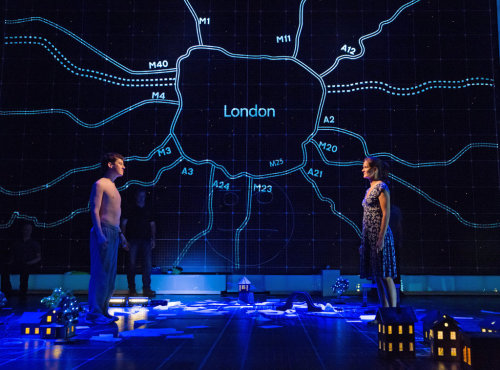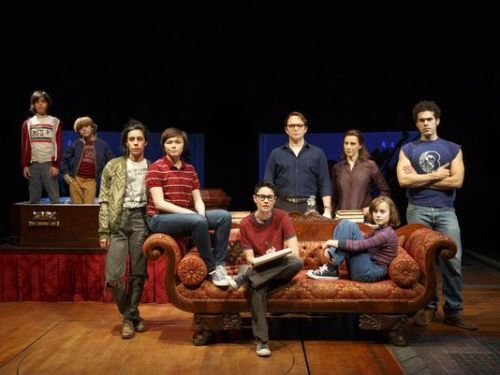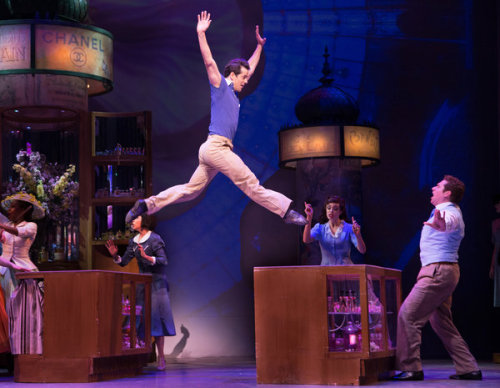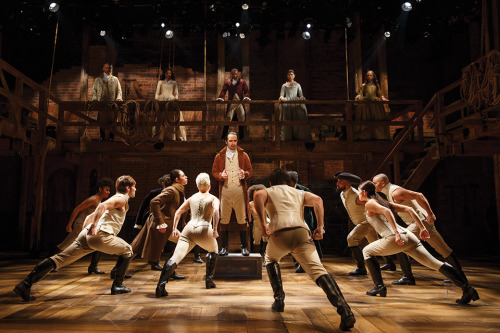
2. I love a story – and “Curious” has a terrific one: Christopher, a young man with intellectual gifts but social handicaps (Asperger’s? Autism? It’s never stated.), is blamed for the death of his neighbor’s dog, goes on a search for the real killer, a journey that leads to dark secrets, human weakness and, ultimately, hope for the future.
3. The character of Christopher. Brilliant, honest, funny (usually accidentally), but overwhelmed by society, the world and its rules. Christopher is ruthlessly logical, approaching life with a mathematical rigor that springs from his own significant skills in maths. But his relentless focus on literal truth means he misses most metaphors – in ways that are both comic and touching. He is obsessed with numbers, and especially likes prime numbers. It’s hard not to love him.
5. The staging. Three walls and the floor in a grid pattern that fills with projection and props – as though we are inside Christopher’s mind as he constructs a world of ever-expanding borders, allowing him to connect more completely with the rest of humanity.
7. The physicality of the production, with actors standing in for props and set pieces (doors, beds, chairs), and creating wonderfully simply gymnastic/dance movements to drive the action. There’s a scene where Christopher is walking through a strange new environment that frightens him – and at one point is walking along the walls, held perfectly horizontal by two other actors.
11. The sense of being overwhelmed by input – visual, aural, physical – the way many children on the autism spectrum are. This is a loud, visually-dense work. Even though the grid of the stage is bare, it can suddenly fill with graphics and imagery. There is decoding work you must do to properly take everything in. The sound is loud, sometimes to the point of blaring. It feels overwhelming at times. It’s supposed to.
17. Every actor’s performance. They were all completely committed and intensely-focused.
19. The coda to the evening, when the actor playing Christopher (Tyler Lea, filling the big shoes), uses the full range of the production’s audiovisual resources to present an answer to a question from Britain’s A-Level mathematics exam.
Except for a couple of minor plot points (which I won’t share – spoilers), I could likely continue this list off into an infinity of prime numbers.




